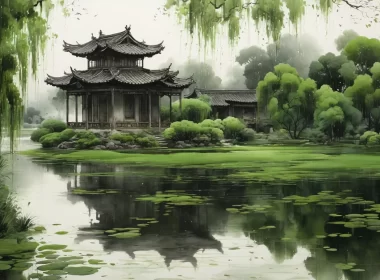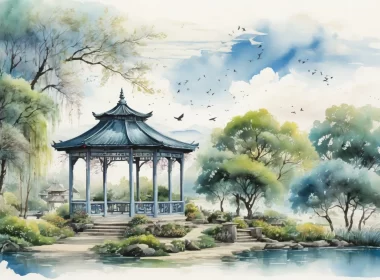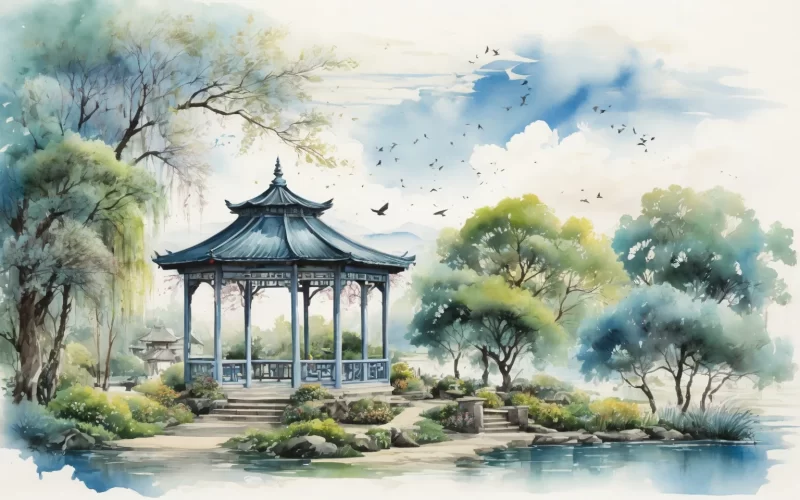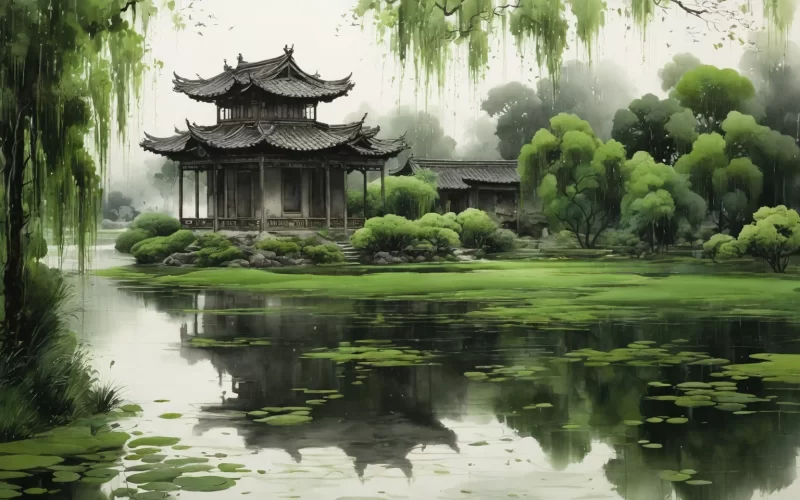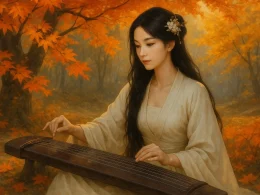The saddest place under heaven
Is the Laolao Pavilion, where guests are seen off.
The spring wind knows the bitterness of parting;
It cannot bear to let the willow twigs turn green.
Original Poem
「劳劳亭」
李白
天下伤心处,劳劳送客亭。
春风知别苦,不遣柳条青。
Interpretation
This poem was composed in early spring as a lament on parting, depicting a farewell scene. Through the imagery of the farewell pavilion, Li Bai conveys the sorrow of separation, while the changing spring breeze and willow branches further accentuate the pain of departure. The poem embodies profound emotion and a unique artistic conception.
First Couplet: "天下伤心处,劳劳送客亭。"
Tiānxià shāngxīn chù, láoláo sòngkè tíng.
The most sorrowful place under heaven is this weary farewell pavilion.
The poet begins with a highly generalized statement, yet does not directly express the pain of parting. Instead, he skillfully projects emotion onto the pavilion itself, lending the expression greater depth. The term "weary" vividly conveys the reluctance of farewell, while also hinting at the frequency and inevitability of such partings, intensifying the emotional weight.
Second Couplet: "春风知别苦,不遣柳条青。"
Chūnfēng zhī bié kǔ, bù qiǎn liǔtiáo qīng.
The spring breeze, aware of parting’s grief, Refrains from greening the willow branches.
Just as the poetic emotion reaches its peak, the poet deftly shifts focus, projecting sorrow onto natural elements. The detail that the breeze delays the greening of willows—traditional symbols of farewell—expresses a poignant desire to postpone parting. This personification not only enriches the imagery but also endows the breeze with emotion, making the sorrow of separation more subtle and profound.
Holistic Appreciation
Centering on the farewell pavilion, this poem expresses the melancholy of parting through ingenious conception and refined language. Rather than directly stating the pain of separation, the poet uses the specific setting of the pavilion to convey emotion with greater depth and power. Simultaneously, the delayed greening of the willows by the spring breeze imbues the scenery with feeling, allowing the poem to carry its sorrow subtly yet resonantly within the description of nature.
Artistic Merits
- Novel Conception, Elevated Perspective: Instead of directly describing the pain of parting, the poet writes of "the most sorrowful place under heaven," using the environment to reflect emotion, resulting in a layered expression.
- Skillful Personification, Blended Scene and Emotion: By suggesting the spring breeze delays the willows' greening due to awareness of parting grief, natural elements are infused with feeling, enhancing the poem's emotional impact.
- Fresh Language, Subtle and Suggestive: The poem's style is clear and natural, unadorned yet profound in conception, demonstrating enduring artistic charm.
Insights
This poem expresses the sorrow of parting with refined strokes, while also revealing that many emotions in life need not be stated outright—they can be conveyed more resonantly through the embellishment of scenery and subtle expression. Though parting is difficult, it is this very reluctance that makes us cherish the time we have together.
About the poet

Li Bai (李白), 701 - 762 A.D., whose ancestral home was in Gansu, was preceded by Li Guang, a general of the Han Dynasty. Tang poetry is one of the brightest constellations in the history of Chinese literature, and one of the brightest stars is Li Bai.



